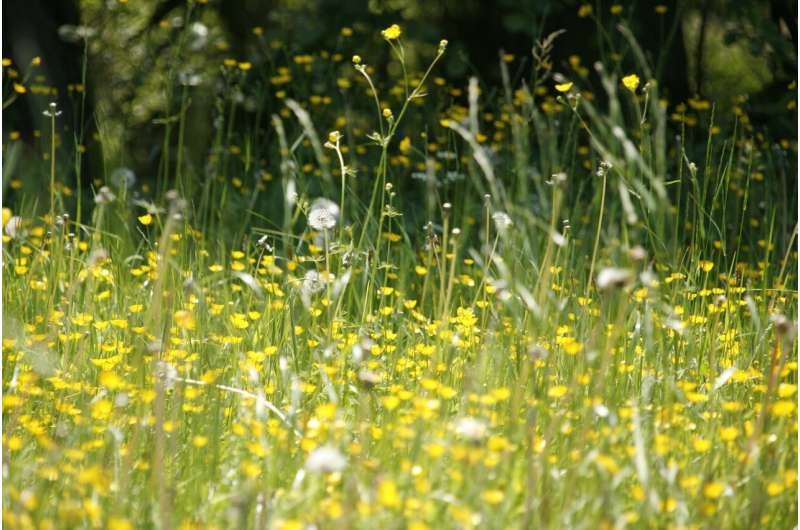Credit: Pixabay/CC0 Public Domain
An international team of researchers has developed a mathematical model for predicting how bad an upcoming hay fever season will be. In their paper published in the journal Science Advances, the group describes their model and test results.
Every spring, millions of people around the planet experience allergies related to airborne pollen. Also known as hay fever, symptoms include red itchy eyes, a runny nose and a sore or scratchy throat. For many years, scientists have been looking for ways to predict the severity of a given allergy season, but thus far, such predictions have fallen far short of expectations. Many weather forecasts include pollen counts and predictions for levels based on temperatures and rainfall in the very short term but there is still no way to predict how bad an entire season might be. In this new effort, the researchers have applied math to the problem to create a model that can accurately predict the severity of an upcoming allergy season—but only on a local level.
The researchers built their model by first studying climatic and pollen levels across Northern Europe for the 20-year period between 1996 and 2016 and then by applying statistical regression to their data. They then added their findings to the Joint UK Land Environmental Simulator to simulate the production of organic carbon in the region over time. They noted that carbon levels are a good indicator of pollen production.
In running their model, they found that it was able to accurately predict pollen levels on a year-by-year basis over the years 1996 to 2016 as compared to levels that were measured for those years. As part of their findings, they discovered that small variations in grass growth in a given area could result in large variations in pollen production. They note that their model uses weather data from one year, to forecast pollen production the following year. More rain and warmth, they noted, generally led to more pollen.
The researchers then used their model to predict what might happen in Europe as the planet heats up due to global warming and found pollen amounts could increase significantly as carbon dioxide levels go up. More specifically, they found that if carbon dioxide levels doubled in the future, pollen in the air each spring could increase by 60%.
More information: Alexander Kurganskiy et al. Predicting the severity of the grass pollen season and the effect of climate change in Northwest Europe, Science Advances (2021). DOI: 10.1126/sciadv.abd7658
Journal information: Science Advances
© 2021 Science X Network























